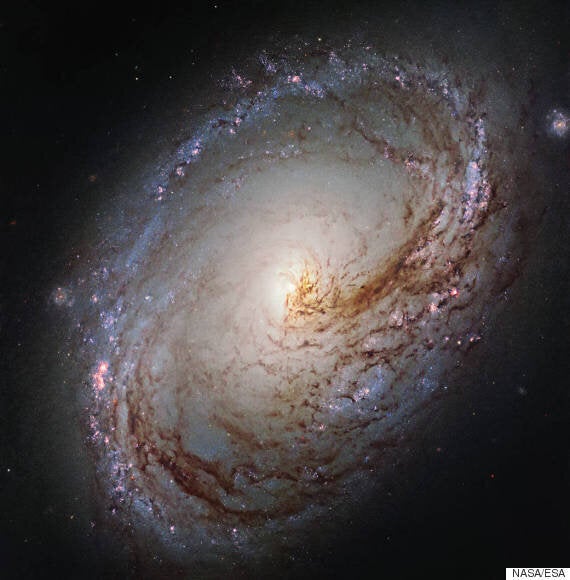The Hubble Telescope has captured a stunning image of a spiral galaxy, 35 million light-years away, very similar in mass and size to the Milky Way.
According to NASA/ESA, it "resembles a giant maelstrom of glowing gas, rippled with dark dust that swirls inwards towards the nucleus."

Known as Messier 96, it sits in the constellation of Leo (The Lion).
SEE ALSO:
- NASA's Hubble Space Telescope Discovers New Behaviour Of An Old 'Nasty' Star
- Pluto's Moons Are A Little Drunk According To Hubble Space Telescope Data
- Hubble Telescope Finds Universe Is 'Missing' 80% Of Its Light
- Hubble Telescope Publishes Deepest-Ever View Of An Ancient Galaxy Cluster
- Happy Birthday Hubble: 25 Years Of Opening Our Eyes To The Universe
The dust and gas are unevenly spread throughout its spiral form and since its core does not line up with the galactic centre, NASA describes Messier 96 as an asymmetrical galaxy.
It owes these asymmetrical qualities to the gravitational pull exerted by neighbouring galaxies that also exist in the same group called the M96 Group.
We have known about this beautiful spiral wonder of nature for quite some time.
"It was first discovered by astronomer Pierre Méchain in 1781, and added to Charles Messier’s famous catalogue of astronomical objects just four days later," NASA states on its website.